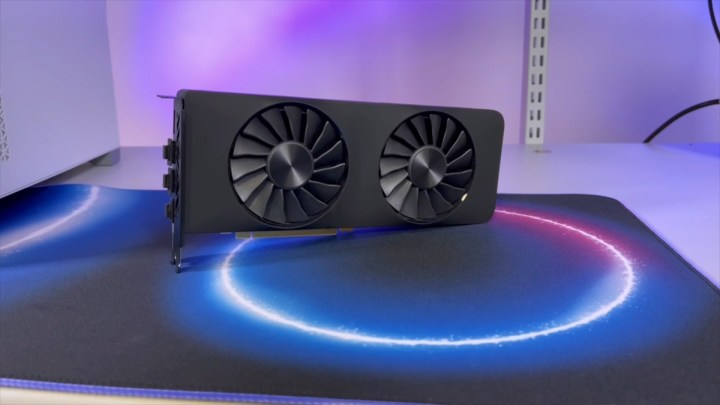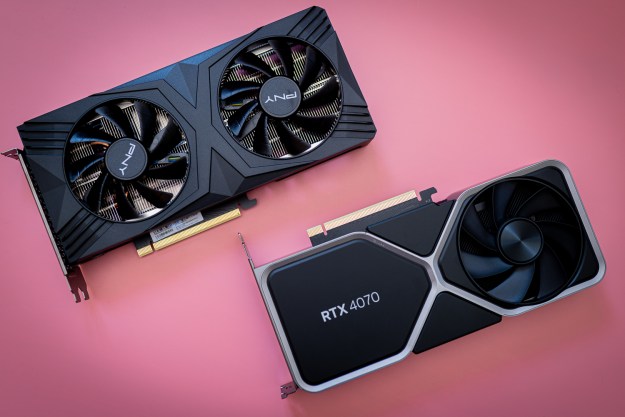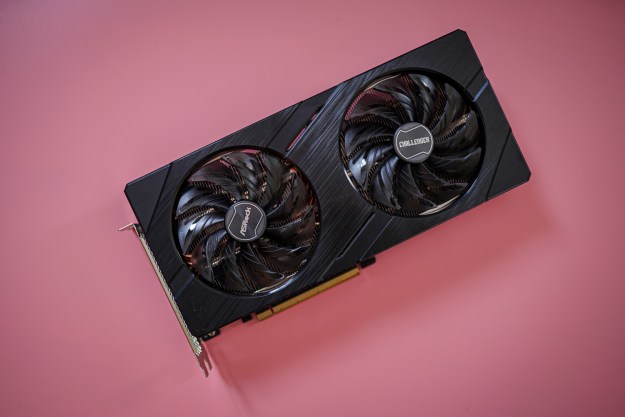Intel seems to be bringing back something that Nvidia and AMD had long given up on: the ability, and the incentive, to use dual graphics cards in a single system.
Multi-GPUs were once a big deal, but the latest generation abandoned that idea for a variety of reasons. However, Intel has allegedly confirmed that you’ll be able to use multiple Intel Arc GPUs at once. Will that help Intel capture some of Nvidia’s and AMD’s customer base?
Update: Intel reached out to us with a short clarification, saying: “Intel showed a Blender Cycles rendering demo at SIGGRAPH with Intel Arc graphics. Multi-GPU rendering support for Intel Arc and Intel Arc Pro graphics cards through oneAPI is supported starting in Blender 3.3. Intel Arc graphics does not support multi-GPU for gaming.”
The original article follows below.

A good few years have passed since some of us were yearning for a dual-GPU setup with one of Nvidia’s latest and greatest. Stacking Titan GPUs was something many gamers longed for, but realistically, most of us couldn’t afford it — and the performance gains weren’t quite worth it for the average player.
While the technology persists in the high-performance computing (HPC) segment and among professionals, consumers now stick to a single graphics card. Intel seems eager to shake things up in that regard.
According to TweakTown, which cites an Intel representative, the company is currently readying its oneAPI software in order to be prepared to support multiple GPUs. In fact, Intel was allegedly planning to show off a dual-Arc system during SIGGRAPH 2022, but was unable to do so. Why? TweakTown claims that Intel couldn’t find a chassis big enough to fit two GPUs in time for the event. This checks out, seeing as Intel seemingly only had a small-form NUC chassis on hand, equipped with a single Arc A770 Limited Edition GPU.

Multi-GPU support is an interesting addition to Intel Arc. At this point, it’s hard to deny that it’ll be tricky for Intel to compete with AMD and Nvidia. Sure, the lineup can trade blows with some Team Green and Team Red GPUs, but we have next-gen cards coming out in the next couple of months — Intel is certainly going to fall behind.
Using dual Intel Arc GPUs versus a single Nvidia or AMD card could prove to be viable, and if the cards are priced down, it might even be a decent option. On the other hand, with the extra power consumption, the requirement of a roomy case, and the thermal concerns, there were plenty of good reasons why AMD and Nvidia stopped pushing for dual-GPU setups. Intel might reveal more about the tech shortly, so perhaps then we will learn about its exact plans.
Editors' Recommendations
- All of the exciting new GPUs still coming in 2024
- The sad reality of AMD’s next-gen GPUs comes into view
- You shouldn’t buy these Nvidia GPUs right now
- How 8GB VRAM GPUs could be made viable again
- AMD’s GPUs had a bigger year in 2023 than you might realize





